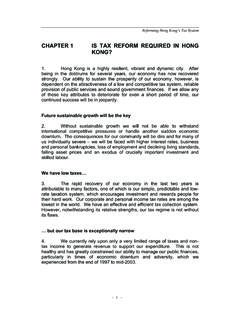Transcription of US Demographic Outlook 2005-2050 - rftgf.org
1 US Demographic Outlook 2005 -2050 Infrastructure Implications of a Larger, More Concentrated, More Diverse PopulationMessnerProject Team MeetingJune 29, 2009 Elise Barrella& Sara BeckElise Barrella& Sara BeckMessnerProject Team MeetingJune 29, 2009 Georgia TechOutline US Population Projections Implications of New Demographics Spatial distribution of population New settlement patterns MegaRegions Infrastructure Projections Transportation Water Resources Wastewater Planning ImplicationsUS Population ProjectionsTotal United States Population310326341357374390406422439050 1001502002503003504004505002010202020302 0402050 YearPopulation (Millions) ..Population Pyramid Projections20102050 Source: United States Census Bureau: 2008 National Population Projection Tables0%10%20%30%40%50%60%70%80%90%100%P opulation Percentage.
2 20102020203020402050 YearAge Group Projections 85 yrs and over 65 to 84 years 45 to 64 years 25 to 44 years 18 to 24 years 14 to 17 years 5 to 13 years Under 5 years13%16%19%20%20%By midcentury, the nation will be : United States Census Bureau: 2008 National Population Projection and more racially and ethnically Percentage ..20102020203020402050 YearRace ProjectionsNative Hawaiian /Pacific IslanderAmerican Indian /Alaska Native Asian Black Hispanic WhiteImmigration policy could have a significant from NHTS 2001. New Immigrant is defined as foreign-born person living in the US for less than 3 yearsSummary of Population Changes Grow from 296M to 438M, an increase of 142M (48%) 82% of growth due to immigrants and their US-born offspring Nearly 1 in 5 Americans will be foreign-born vs.
3 1 in 8 in 2005 Non-Hispanic Whites will become a minority Hispanics will triple in number, increasing share to 29% of population Blacks will remain 13% of the population; Asians will increase to 9% from 5% Elderly population will more than double Gap between the number of working-age people and dependents (children and seniors) will widen as boomers age Pew Research Center, February 2008, US Population Projections: 2005 -2050 Implications of Aging Population Percent of older Americans who continue to drive is growing, especially older women Safety implications Air quality concerns (older cars) Dependence on private car increasing, on transit decreasing Make 22% less trips than those <65, but mostly non-work trips Important subsets are less likely to have car access Special transit services often not available or inadequateNHTS, March 2009, Older Americans.
4 Safety ImplicationsBrookings Institution, 2003, The Mobility Needs of Older Americans: Implications for Transportation Reauthorization Affordable housing provision and maintenance of housing and location efficiency property values and tax rates Older adults, along with other low-or fixed-income persons, are most susceptible to rising energy, housing, and transportation costsImplications of More Diverse Population Elderly Hispanic or black persons are more likely to require assistance due to medical conditions Also less likely to be licensed Rely more on family members Greater demand for public transportation Need for bilingual or multilingual signage More housing options needed for larger size and composition of familiesWhere will all the people go?
5 From 2007-2008, only 12% of population changed residences Why move? Economic opportunity Why stay? Family and social network Differences between movers and stayers? Geography and education Why fewer moves? Aging population and more two-career households Economic downturn may have also contributedPew Research Center, December 2008, Who Moves? Who Stays Put? Where s Home? New immigrants will be concentrated in certain areas (West and Northeast) Stress on existing aging infrastructure Demands for new infrastructure (housing, transportation, etc.) Location of first entry has shifted to suburbs Elderly also more likely to be located in the suburbs Often fewer transportation options in suburban locationsBrookings Institution, 2003, The Mobility Needs of Older Americans: Implications for Transportation ReauthorizationAging suburbs due in part to age-in-place phenomenonBrookings Institution, 2003, The Mobility Needs of Older Americans: Implications for Transportation ReauthorizationSuburban havens (Northeast) and Suburban Growth Centers (Sunbelt)Population Change Among StatesPew Research Center, March 2009, Magnet or Sticky?
6 A State-by-State TypologyWhere are people moving to? Raleigh, NC Austin, TX* Charlotte, NC* Phoenix, AZ Dallas, TX* San Antonio, TX Houston, TX New Orleans, LA Atlanta, GA Denver, CO*Data from 2008 Census released in March 09*Corresponds with data from American Moving and Storage Association20082030 Climate Change & Migration1 meter rise in sea levelAnimation of sea level rise in Northeast: , Background Document for the MegaRegions and Transportation Symposium held on June 20, 2008 MegaRegions Framework Between 2005 and 2050, more than half of the nation s population growth, and perhaps as much as two-thirds of its economic growth, will occur in several MegaRegions. These regions are characterized as networks of metropolitan centers and their surrounding areas that have existing environmental, economic and infrastructure relationships.
7 The traits of a megaregion also include a shared sense of identity, particularly stemming from economic and social interactions. They often cross county and state lines and are linked by transportation and communication Document for the MegaRegions and Transportation Symposium held on June 20, 2008 RPA s MegaRegions (2006)Background Document for the MegaRegions and Transportation Symposium held on June 20, 2008 MegaPolitans ( 2005 )Criteria for MegaRegionsMetropolitan InstituteRegional Plan AssociationAnalysis UnitCountyCountyRequirements of megaregionsMore than 2 metropolitan areas & 10 million population by 2040N/AAnalysis Criteria-Population size-Contiguity-Cultural and historical geography-Physical environment-Links of large centers-Growth projections-Goods and service flows-Environmental systems and topography-Infrastructure system-Economic linkage-Settlement patterns and land use-Shared culture and historyPiedmont Atlantic MegaRegionDelineating MegaRegions(CQGRD)Metro Regions: Combinations of corecounties and their areas of influencesFunctional Regions.
8 Clusters of Metro Regions based on functional relationshipsMegaregions: Geographically contiguous and close Functional RegionsMegaRegions -2050 Density of trade volumes with Canada and Mexico (2035)Density of trade volumes with overseas countries (2035)Source: FHWA Freight Analysis Framework (2006)Interstate Bottlenecks (National Surface Transportation Policy and Revenue Study Commission, 2007)Proposed High Speed Rail Corridors(FRA, 2005 )Planning Challenges for MegaRegions Defining MegaRegions based on environmental, economic, cultural linkages Developing institutions for integrated planning across functions at megaregional scale Continually changing and growing rapidly, so planning requires flexibility Funding for projects that cross jurisdictional boundaries Different issues in different MegaRegionsRegional Plan Association, America 2050 Project, The Healdsburg Research Seminar on MegaRegionsInfrastructure-Specific Projections Water Systems(source.)
9 ASCE Infrastructure Report Card)In 10 years, 35 states will be facing water shortages. In 2009, 8% of water systems serve 81% of the Projections Water Pipessource: EPA Infrastructure Gap Analysis Report, 2002 Many water and wastewater pipes are reaching the end of their design livesInfrastructure-Specific Projections -Bridges-The average bridge is 43 years old-12% are structurally deficient -limited structural capacity-15% are functionally obsolete -can t accommodate current traffic volumes, vehicle sizes and weightssource: ASCE Infrastructure Report CardInfrastructure-Specific Projections -RoadsMiles of roads of federal-aid urbanized areasTotal Miles/1,000 personsInterstate : CQGRD from Miles and daily vehicle-miles of travel, FHWA (2006)Share of the proposed mileage of SHR (%)MegaregionsNon-megaregionsTotalFedera lly designated : Schwieterman & Scheidt (2007), Survey of Current High-Speed Rail Planning Effortsin the United States, Transportation Research Record, Journal of the Transportation ResearchBoard, No.
10 1995. Railways 2007. Projections -RoadsPlanning Considerations Longer-term planning to begin preparing for Demographic changes Travel forecasting based on mean indicators can mask needs of changing population Dealing with uncertainty Infrastructure planning and funding at multiple scales, including the MegaRegion Focus on jobs/housing/recreation balance in suburban locations OR making inner cities more attractive to familiesAdditional Materials2007 Transportation DataDriving AloneCarpoolingPublic Transportation2007 Income DataMedian Household Income% Below Poverty LineEmployment/Population RatioPopulation ProjectionsUnited States281,421,906 United States363,584,435 United ,871,6481 California46,444,861.
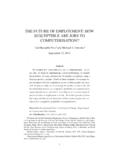

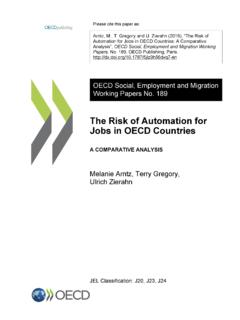
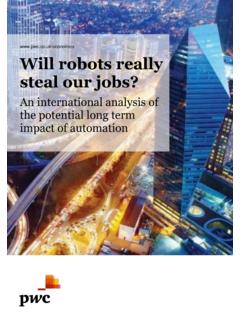
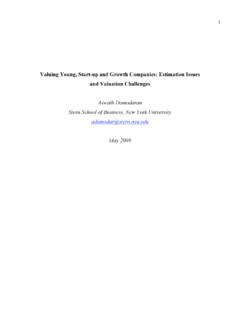
![Capitalism in the age of robots-Final[2] - ineteconomics.org](/cache/preview/a/a/c/6/a/b/c/6/thumb-aac6abc6513ee20e53e35b861f7788a8.jpg)

